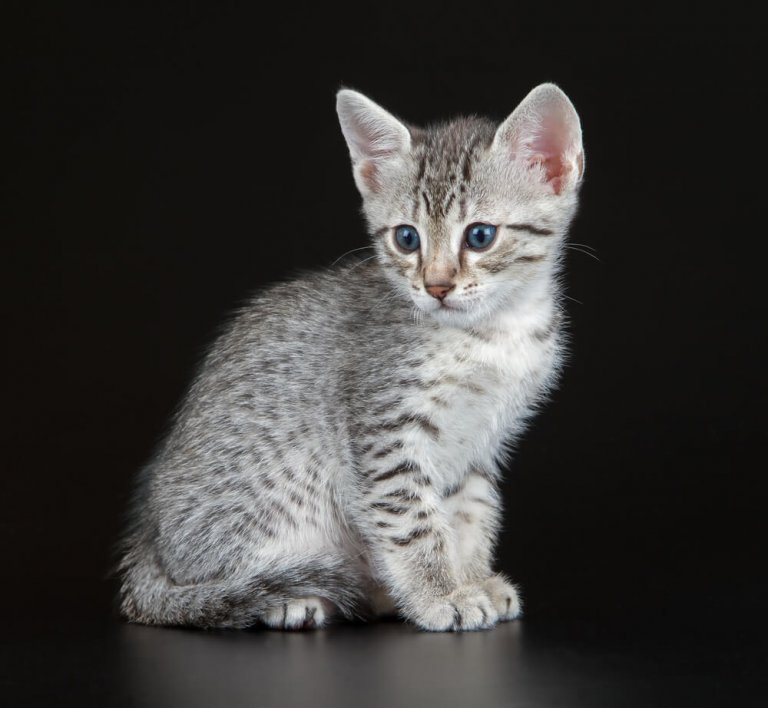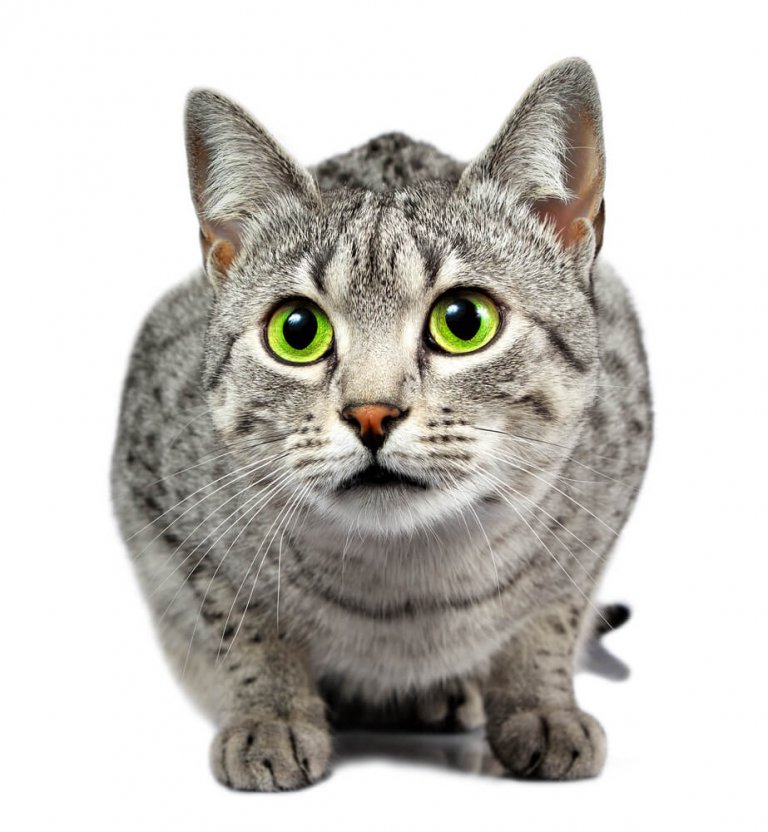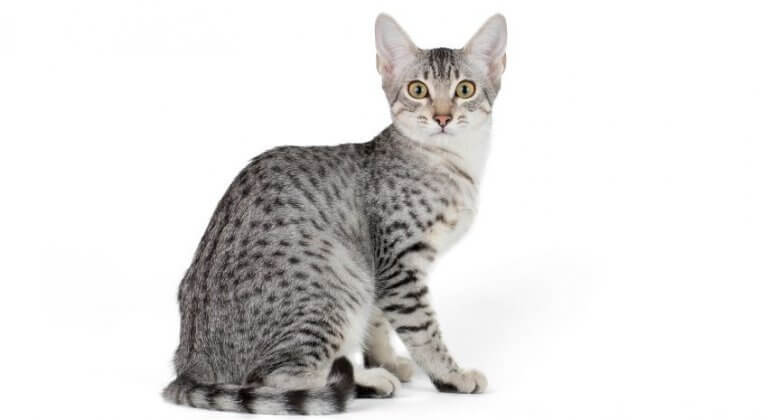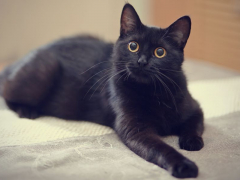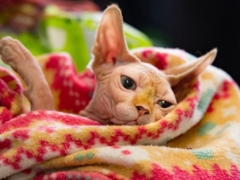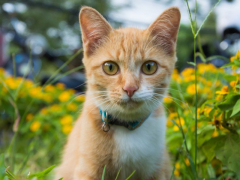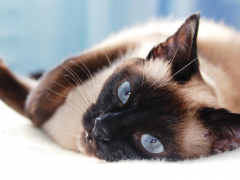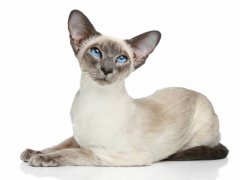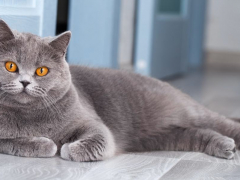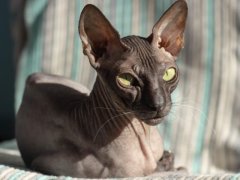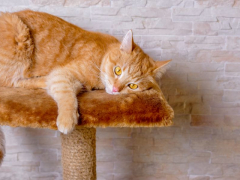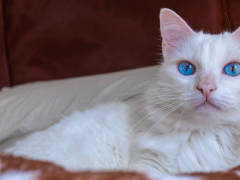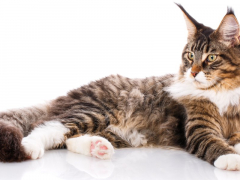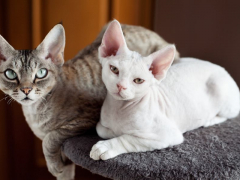Personality and Temperament
Playful and curious when at home with family, the Egyptian Mau cat can be cautious or standoffish with strangers. These stunning cats are highly intelligent, with a reputation for using their musical voices to make conversation with their favorite people.
Like most felines, these Egyptian beauties love to relax when the time comes, but for the most part, they are not couch potatoes. Fast and athletic, they truly enjoy playtime, and their ability to learn interactive games has given them a reputation for having almost doglike personalities.
If you bring an Egyptian Mau cat into your family, you will need to spend plenty of time helping to bring out the best in their personality. Be sure to focus on socialization to prevent problems at the vet and to ensure that the cat is comfortable with visitors. Take care to ensure that all interactions are as positive as possible, so the cat learns that humans are fun and friendly, and that treats are involved when good behavior is put on display.
If you plan to show your Egyptian Mau cat, socialization takes on an even more important role: Aggressive cats are disqualified immediately and antisocial individuals aren't viewed as desirable even when their markings are beautiful.
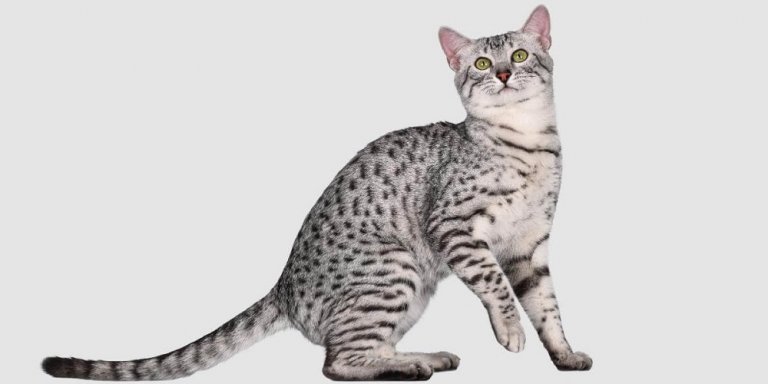
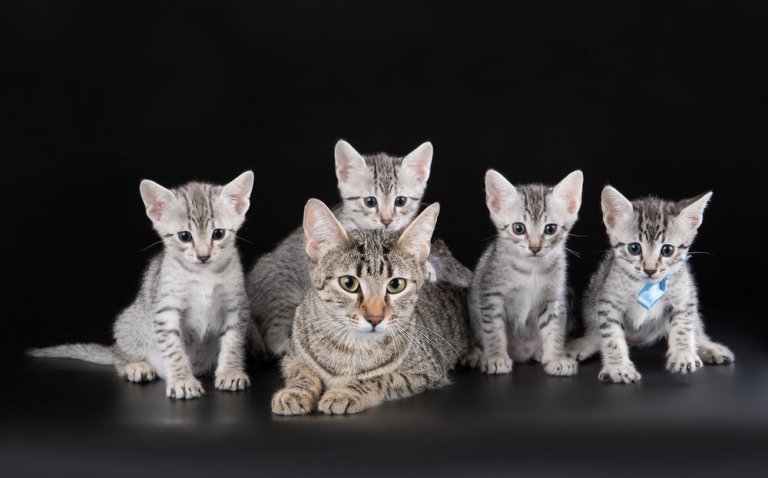
Care
Nutrition
Grooming
Exercise
Health
Although Egyptian Mau cats have no special nutritional needs, like most cats, they thrive on a high-protein diet. Even though they are active, these cats are fairly small and overfeeding can lead to obesity, which can create pain and joint issues. It's important to check with your vet to ensure that you're feeding the correct amount.
The Egyptian Mau cat has a short, fine coat. They'll appreciate the opportunity to bond with you as you brush and polish the coat to bring out the shine. Brushing once or twice per week will help cut down on shedding, too.
Trim the nails every one to two weeks, and look inside the ears weekly to check for abnormal redness or odor, or excessive dirt in the ears. If the ears look dirty, clean them with a pet-safe ear cleaner and wipe with cotton balls or a piece of gauze.
Egyptian Mau cats love to play. These cats enjoy fun of all kinds, but they truly enjoy running and jumping. This breed holds the land speed record for domesticated cats: Egyptian Mau cats have been clocked at 30 miles per hour!
These cats appreciate toys just as much as other active breeds. They'll happily play by themselves, and they enjoy interacting with you, as well. The Egyptian Mau can be taught to walk on a leash and retrieve, which are fantastic ways to help expend energy and expand opportunities for socialization. In addition to toys, be sure that your Egyptian Mau cat has access to multiple scratching posts and a tall cat tower that satisfies their need to jump and climb.
Even with all the right cat furniture in place, these cats can be found peering down from the tops of cupboards, bookshelves, refrigerators, and other high vantage points.
Egyptian Mau cats are generally healthy, but like many pedigreed cats, they they may be prone to certain genetic disorders common in the breed.
Some issues seen in Egyptian Mau include a type of heart disease called hypertrophic cardiomyopathy, pyruvate kinase deficiency (a condition that causes anemia), leukodystrophy (a rare genetic disorder affecting the spine and brain), and urolithiasis, which is a form of bladder stones. Proper diet can help prevent stone formation, as can ample hydration.
Consider feeding your Egyptian Mau fresh food or high-quality canned food rather than dry food since lack of moisture can contribute to kidney, bladder, and urinary-tract disease.
History
As the breed's name suggests, the Egyptian Mau cat is thought to have originated in Egypt, though there are no clear records as to how Egyptian street cats became the modern breed we know today. No one knows exactly when these cats were developed, but if the Egyptian Mau can indeed trace its roots back to Egypt, the breed is an ancient one.
Egyptian hieroglyphics depict spotted cats that bear similarities to today’s Egyptian Mau cats, so it is entirely possible that this breed or its close ancestors were among those revered by ancient Egyptian people, perhaps more than 3,500 years ago.
The standardized Egyptian Mau cats we know and love today were likely developed using spotted Egyptian street cats, which are believed to count North African wildcats among their ancestors.
During the early centuries A.D., Romans brought spotted Egyptian cats to Italy, and from there, these cats made their way around Europe. It is likely that domestic cats with Egyptian origins interbred with European wildcats, ultimately treating humanity to the northern European domestic cats that are so prevalent now.
Pedigreed Egyptian cats were bred in Europe prior to the second World War, but few records survive. Like many cat breeds, the Egyptian Mau was nearly extinct by the end of World War II; food shortages and widespread devastation led to tragedy for pets all throughout the affected regions.
Luckily, this particular breed was given a second chance. An exiled Russian princess named Nathalie Troubetzkoy was serving as a nurse in Rome during the early 1950s when she was given a silver spotted female kitten. This kitten had originated with a diplomat from one of Rome's Middle East embassies, although history has forgotten which one.
After some research, Troubetzkoy came to the conclusion that the spotted kitten was an Egyptian Mau. She named the kitten Lulu or Ludol, and acquired a black male Egyptian Mau named Gregorio. She used her diplomatic contacts to import more Egyptian Mau cats from the Middle East and her first litter of Egyptian Mau kittens was born in 1953.
In 1956, the princess emigrated to America, bringing three of her treasured Egyptian Mau cats with her. Two of these cats, a silver female named Fatima Baba and a bronze male named Fatima Jojo formed the foundation for today's Egyptian Mau cat breed.
The Cat Fanciers' Federation registered these Egyptian Mau cats in 1956 when they first arrived in the United States. Soon, other registries including the Canadian Cat Association and the Cat Fanciers' Association (CFA) recognized the new line of Egyptian Mau cats. CFA granted the breed championship status in 1977.
These days, Egyptian Mau breeders can be found worldwide; however, they are few and far between because the Egyptian Mau cat is still a rare breed.
